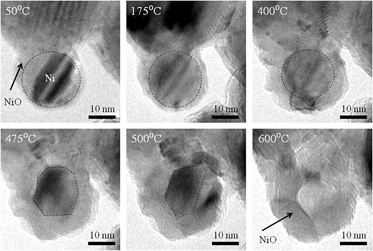Crossref Citations
This article has been cited by the following publications. This list is generated based on data provided by
Crossref.
Holland, Troy B.
Anselmi-Tamburini, Umberto
and
Mukherjee, Amiya K.
2013.
Electric fields and the future of scalability in spark plasma sintering.
Scripta Materialia,
Vol. 69,
Issue. 2,
p.
117.
Bonifacio, Cecile S.
Holland, Troy B.
and
van Benthem, Klaus
2013.
Evidence of surface cleaning during electric field assisted sintering.
Scripta Materialia,
Vol. 69,
Issue. 11-12,
p.
769.
Thron, Andrew M.
Greene, Peter
Liu, Kai
and
van Benthem, Klaus
2014.
In-situ observation of equilibrium transitions in Ni films; agglomeration and impurity effects.
Ultramicroscopy,
Vol. 137,
Issue. ,
p.
55.
Bonifacio, Cecile S.
Holland, Troy B.
and
van Benthem, Klaus
2014.
Time-dependent dielectric breakdown of surface oxides during electric-field-assisted sintering.
Acta Materialia,
Vol. 63,
Issue. ,
p.
140.
Bonifacio, Cecile S.
Carenco, Sophie
Wu, Cheng Hao
House, Stephen D.
Bluhm, Hendrik
and
Yang, Judith C.
2015.
Thermal Stability of Core–Shell Nanoparticles: A Combined in Situ Study by XPS and TEM.
Chemistry of Materials,
Vol. 27,
Issue. 20,
p.
6960.
Majidi, Hasti
Holland, Troy B.
and
van Benthem, Klaus
2015.
Quantitative analysis for in situ sintering of 3% yttria-stablized zirconia in the transmission electron microscope.
Ultramicroscopy,
Vol. 152,
Issue. ,
p.
35.
Bonifacio, Cecile S.
Das, Gautom
Kennedy, Ian M.
and
van Benthem, Klaus
2017.
Reduction reactions and densification during in situ TEM heating of iron oxide nanochains.
Journal of Applied Physics,
Vol. 122,
Issue. 23,
He, Shidong
Pfau, Andrew J.
Diulus, John Trey
Albuquerque, Gustavo H.
and
Herman, Gregory S.
2018.
Deposition and characterization of nickel gallium thin films.
Journal of Vacuum Science & Technology A: Vacuum, Surfaces, and Films,
Vol. 36,
Issue. 3,
Olevsky, Eugene A.
and
Dudina, Dina V.
2018.
Field-Assisted Sintering.
p.
89.
Trapp, Johannes
and
Kieback, Bernd
2019.
Fundamental principles of spark plasma sintering of metals: part I – Joule heating controlled by the evolution of powder resistivity and local current densities.
Powder Metallurgy,
Vol. 62,
Issue. 5,
p.
297.
Qu, Boyi
Bonifacio, Cecile S.
Majidi, Hasti
and
van Benthem, Klaus
2020.
Stabilization of metal(II)oxides on the nanoscale.
Materials Research Letters,
Vol. 8,
Issue. 1,
p.
41.
Riyaz, Fathima
Bhai Pushpa, Vadakkethil Lalitha
and
Sukumaran, Vidya
2020.
Synthesis and characterization of nano NiZrO3 for optical and dielectric applications.
International Journal of Materials Research,
Jamadagni, Bhagyashree
and
van Benthem, Klaus
2021.
Mechanisms of long-range edge retraction of metal bilayer films.
Journal of Applied Physics,
Vol. 130,
Issue. 12,
Qu, Boyi
and
van Benthem, Klaus
2021.
In-situ NiO nanostructure growth during heating in water vapor atmosphere.
Microscopy and Microanalysis,
Vol. 27,
Issue. S1,
p.
2102.
Qu, Boyi
and
van Benthem, Klaus
2022.
In situ anisotropic NiO nanostructure growth at high temperature and under water vapor.
Journal of the American Ceramic Society,
Vol. 105,
Issue. 4,
p.
2454.



